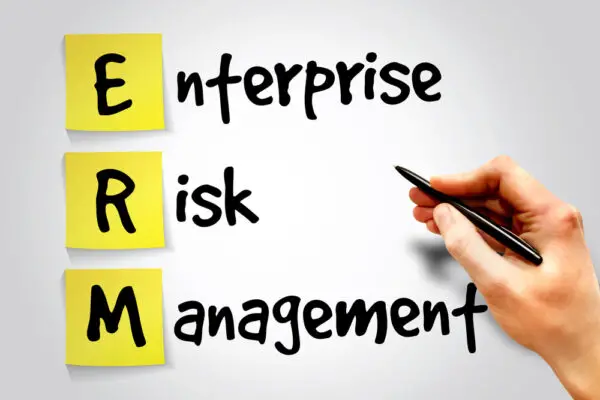In an increasingly complex and unpredictable world, businesses and organizations must be prepared to navigate the ever-changing landscape of risks.
Traditional risk assessment methods often fail to capture the multifaceted nature of modern challenges.
Enter Scenario-Based Risk Assessment—a dynamic approach that harnesses the power of imagination and strategic thinking to prepare for the ‘what-ifs’ of tomorrow.
Exploring various hypothetical scenarios, this method allows us to delve into the unknown, uncover hidden vulnerabilities, and craft resilient strategies.
This article provides an overview of scenario-based risk assessment in the context of risk management.
It examines the role of scenarios in risk assessment and highlights the necessity for a scenario-based approach.
Various methods for conducting scenario-based risk assessment are discussed, along with an exploration of the different scenarios commonly used in this process.
The article also delves into the analysis of risks using scenarios, with a particular focus on systemic risks.

Scenario-based Risk Assessment
Scenario-based risk assessment is a widely used method for identifying and evaluating potential risks in various domains.
It involves systematically identifying and analyzing different scenarios to assess the likelihood and impact of potential risks.
This approach allows for a more comprehensive understanding of risks by considering different scenarios and their associated probabilities.
Risk measurements are integral to scenario-based risk assessments, as they provide quantifiable data to assess the severity and likelihood of risks.
The scenario-based assessment involves the generation of risk scenarios, which are hypothetical situations that represent potential risks.
These scenarios can be built based on historical data, expert opinions, or simulation models.
The scenario-based risk evaluation then involves analyzing the identified scenarios to determine their potential impact and develop appropriate risk mitigation strategies.
Overall, scenario-based risk assessment provides a structured and analytical approach to identify, measure, and evaluate risks in various domains.
Financial risk management is a crucial aspect of any organization’s operations.
It involves identifying and analyzing potential risks that could negatively impact the organization’s financial health.
One common risk measure used in this field is the Q-distortion risk measure, which quantifies the potential loss in the value of a portfolio.
This measure considers the likelihood and severity of tail risks, or extreme events, which can significantly impact financial markets.
Risk scenario building is another important technique used in financial risk management. It involves creating hypothetical scenarios to assess the potential impact of various risks on the organization’s financial position.
By considering different combinations of risk measures, such as P-based, organizations can gain a more comprehensive understanding of their overall risk exposure.
Accounting for tail risk is crucial in financial risk management, as these extreme events can disproportionately impact an organization’s financial performance.
Classic law-based risk measures, such as value-at-risk (VaR) and expected shortfall (ES), are commonly used to assess tail risk. These measures provide an estimate of the potential loss that a portfolio could experience during adverse market conditions.
External risk measures are also important in financial risk management. These measures, such as credit ratings or market indices, provide external benchmarks against which an organization’s risk exposure can be compared.
Monitoring these external measures, organizations can identify potential risks and take appropriate actions to mitigate them.
The Basel Committee on Banking Supervision plays a significant role in establishing regulatory frameworks for financial risk management.
Basel III and Basel IV are international banking regulations that aim to improve the banking sector’s resilience. Basel 3.5, the Fundamental Review of the Trading Book (FRTB), introduces more stringent capital requirements for banks’ trading activities, specifically targeting market risk.
In practical applications of financial risk management, formulas for market risk are used to calculate the potential losses associated with investments.
These formulas consider factors such as volatility, correlation, and market liquidity to estimate the potential downside risks.
Financial risk management is not limited to banks and financial institutions. It is also relevant in other sectors, such as managing a German stock portfolio.
Investors in the stock market need to assess and manage the risks associated with their investments to protect their capital and achieve desired returns.
The field of reliability also intersects with financial risk management. Reliability engineering involves assessing the probability of failure or malfunction of systems, which can have financial implications for organizations.
Organizations can minimize the financial risks associated with system downtime or operational disruptions by identifying and mitigating potential failures.
Similarly, project management incorporates risk management as a core component. Project managers need to identify, assess, and mitigate potential risks that could impact the successful completion of a project.
This includes considering financial risks and ensuring appropriate risk management strategies are in place to protect the project’s budget and timeline.
Financial risk management encompasses various techniques and measures to identify, assess, and mitigate potential risks to an organization’s financial performance.
It involves considering factors such as tail risk, external benchmarks, and regulatory frameworks. The field intersects with reliability engineering and project management, highlighting its importance across industries.
Financial risk management is an ongoing process that requires constant monitoring and adjustment
It is essential for organizations to regularly review and update their risk management strategies to ensure they are effectively addressing current and emerging risks.
Implementing robust risk management practices, organizations can enhance their resilience and ability to navigate uncertainties in the dynamic and complex financial landscape.
Additionally, the field of financial risk management continues to evolve as new risks emerge, such as cyber threats and climate change, requiring organizations to adapt their risk management approaches accordingly.
Overview
To gain a comprehensive understanding of the potential risks involved, an overview of the current topic of scenario-based risk assessment is necessary.
This approach to risk assessment involves the identification and analysis of potential risks through the creation and evaluation of various scenarios.
Here are some key points to consider:
- Risk distribution: Scenario-based risk assessment allows for a thorough examination of the distribution of risks across different scenarios, providing insights into potential vulnerabilities and areas of concern.
- Asset-based risk assessment: This approach considers the specific assets held within a portfolio to assess their potential risks. A more accurate risk assessment can be conducted by considering each asset’s unique characteristics and attributes.
- Credit ratings: Scenario-based risk assessment often incorporates credit ratings in evaluating the potential risks of different scenarios. This provides a quantitative measure of creditworthiness and helps inform the risk assessment process.
The role of scenarios in risk assessment
An essential element of evaluating potential risks involves considering and analyzing different scenarios.
Scenario-based risk assessment is a systematic approach that allows organizations to identify and assess potential risk events based on hypothetical situations.
Organizations can better understand the likelihood and impact of different risk events by analyzing various scenarios, enabling them to develop effective risk management strategies.
Scenarios in risk assessment are typically based on historical data and expert knowledge, allowing organizations to estimate the probabilities of different outcomes.
These probabilities are often represented using empirical distributions, which describe the frequency of different events. Conditional distributions can also be used to model the likelihood of specific events given certain conditions.
Distribution functions are then used to calculate the probabilities of different outcomes.
Using scenarios in risk assessment, organizations can better anticipate and prepare for potential risks, enabling them to make informed decisions and mitigate the impact of adverse events.
The role of scenarios in risk assessment is crucial in helping organizations proactively manage and reduce their exposure to risks.
Table: Example of Scenario-based Risk Assessment
| Scenario | Likelihood | Impact | Risk Level |
|---|---|---|---|
| Scenario 1 | Low | Low | Low |
| Scenario 2 | Medium | High | High |
| Scenario 3 | High | Medium | High |
| Scenario 4 | Low | High | Medium |
The need for scenario-based risk assessment
Using different hypothetical situations is essential in evaluating potential risks and developing effective risk management strategies.
Scenario-based risk assessment involves the creation of possible scenarios that represent critical risk events.
These scenarios allow for a comprehensive analysis of potential risk-analysis deviations, helping organizations identify and quantify risks that traditional methods may not capture.
In scenario-based risk assessment, a mathcal{q}-based risk measure is often used to assess the impact of different scenarios on an organization’s risk profile.
This measure considers the likelihood and severity of various outcomes, providing a quantitative framework for evaluating risks.
Furthermore, scenario-based risk assessment is crucial for establishing a risk appetite framework.
By considering various stochastic risk events, organizations can determine their tolerance for different scenarios and make informed decisions about risk acceptance or mitigation.
Scenario-based risk assessment enables organizations to make choices under risk by providing a structured approach to understanding and managing potential risks.
Methods for scenario-based risk assessment
Methods commonly employed in evaluating potential risks and developing effective risk management strategies involve using different hypothetical situations that allow for a comprehensive analysis of potential deviations.
Scenario-based risk assessment methods are widely used in various domains, including credit and capital risk management.
These methods enable organizations to assess the impact of different scenarios on their financial position and evaluate the likelihood of various outcomes.
By considering factors such as risk measures, tail risk, and market risk, scenario-based risk assessment provides a systematic approach to understanding the potential risks faced by an organization.
This approach involves constructing various scenarios, each representing a particular risk, and analyzing the potential consequences of each scenario.
Types of scenarios used in risk assessment
In scenario-based risk assessment, various scenarios assess the potential risks and their impacts on an organization or system.
These scenarios provide a structured framework for evaluating the likelihood and consequences of different risk events.
The types of scenarios used in risk assessment can vary depending on the specific context and objectives of the assessment. Some common types of scenarios include:
- Deterministic Scenarios:
- These scenarios involve a single set of predefined conditions and assumptions to evaluate the risk exposure.
- They provide a simplified representation of potential risk events and their impacts.
- Stochastic Scenarios:
- Stochastic scenarios use probability distributions to describe the uncertainties and variations in risk events.
- They allow for a more comprehensive assessment by considering the range of possible outcomes.
- Extreme Event Scenarios:
- Extreme event scenarios focus on low-probability, high-consequence events, such as natural disasters or financial crises.
- They are used to account for tail risk and assess the organization’s resilience to such events.
Risk analysis using scenarios
Risk analysis using scenarios is crucial for organizations to identify and evaluate potential risks.
The basic steps in risk analysis using scenarios involve the following:
- Identifying potential hazards.
- Assessing their impact and likelihood.
- Developing mitigation strategies.
Analyzing business risks using scenarios allows organizations to simulate different scenarios and assess their potential impact on operations, financials, and reputation.
This enables them to make informed decisions and implement effective risk management strategies.

Basic steps in risk analysis using scenarios
One approach to conducting scenario risk analysis involves identifying and selecting relevant scenarios.
This process is crucial to capture a comprehensive range of potential risks and uncertainties.
Once the relevant scenarios have been identified, the next step is to assign probabilities to each scenario based on their likelihood of occurring.
This can be done by thoroughly analyzing historical data, expert opinions, and statistical models.
After the probabilities have been assigned, the next step is to quantify the impact of each scenario on the desired measure of risk.
This can be done using various risk measures such as Basel risk measures, mathcal{q}-based coherent risk measures, and mathcal{q}-based comonotonic-additive risk measures.
Analyzing business risks using scenarios
Analyzing business risks using scenarios involves identifying and selecting relevant situations that may impact the desired outcome, followed by assigning probabilities to each situation based on their likelihood of occurrence and quantifying their impact on the measure of interest.
This process allows businesses to assess the potential risks they may face and make informed decisions to mitigate those risks.
Various risk measures can be used in scenario analysis, including q-distortion risk measure, q-spectral risk measure, and p-based risk measures.
These measures provide different perspectives on risk and help businesses understand the potential impact of different scenarios on their objectives.
In addition, there are different classes of risk measures, such as coherent and convex, which offer different properties and applicability.
Understanding and quantifying risks through scenario analysis is crucial for regulatory capital calculation and ensuring businesses have adequate capital to cover potential losses and avoid capital shortfall.
| Risk Measure | Definition |
|---|---|
| q-distortion risk measure | Measures the potential loss under a given risk level, while considering the shape of the probability distribution function. |
| q-spectral risk measure | Evaluates the risk of extreme events by considering the tail behavior of the probability distribution function. |
| p-based risk measures | Measure the risk based on quantiles or percentiles of the probability distribution function. |
| Invariant risk measures | Risk measures that maintain their value under certain transformations, such as translation or scaling of the probability distribution function. |
Systemic risks and scenario analysis
Systemic risks can be evaluated and understood through scenario analysis, which allows for a comprehensive assessment of potential future events and their impacts on a system.
This form of scenario-based risk assessment involves creating scenarios that capture different combinations of key risk factors.
Combining these scenarios with tuples of distributions for each risk factor can generate a set of possible future outcomes.
These outcomes can then be used to assess a given system’s potential credit assessments and credit estimates.
Scenario analysis also enables the identification of key portfolio indicators that can help monitor and manage systemic risks effectively.
Scenario analysis provides a structured approach to understanding and quantifying the impact of systemic risks on a system.
Frequently Asked Questions
How Do Scenarios Help in Identifying and Analyzing Risks in a Real-World Context?
Scenarios aid in identifying and analyzing risks within real-world contexts by providing a structured framework for evaluating potential hazards and their associated impacts.
This approach allows for a systematic assessment of risk factors and facilitates informed decision-making processes.
Are There Any Limitations or Challenges Associated With Scenario-Based Risk Assessment?
Limitations and challenges associated with scenario-based risk assessment include the potential for bias in scenario selection, difficulty in accurately predicting future events, and the need for expertise in developing and analyzing scenarios.
How Can Scenario-Based Risk Assessment Be Effectively Integrated Into Existing Risk Management Frameworks?
To effectively integrate scenario-based risk assessment into existing risk management frameworks, it is necessary to consider its compatibility with the framework’s objectives, processes, and tools.
This integration should be based on a systematic approach that ensures consistency and enhances overall risk management effectiveness.
What Is the Role of Expert Judgment in Developing and Evaluating Scenarios for Risk Assessment?
The role of expert judgment in developing and evaluating scenarios for risk assessment is crucial as it allows for the inclusion of specialized knowledge and experience.
It ensures a comprehensive and accurate analysis of potential risks and their potential impact.
Can You Provide Examples of Industries or Sectors Where Scenario-Based Risk Assessment Has Been Successfully Implemented?
Several industries and sectors have successfully implemented scenario-based risk assessments to evaluate potential risks.
Examples include the oil and gas industry, transportation sector, financial services, healthcare, and environmental management.

Conclusion
Scenario-based risk assessment is valuable for analyzing and managing risks in various fields. Organizations can anticipate potential risks and develop effective strategies to mitigate them by employing scenarios.
This approach enables a comprehensive evaluation of risks by considering various factors such as environmental, economic, and social aspects.
Different methods like qualitative and quantitative analysis can assess risks based on scenarios. By incorporating scenario analysis into risk assessment, organizations can identify systemic risks and design appropriate measures to address them.
Scenario-based risk assessment provides a structured and analytical approach to managing risks effectively.

Chris Ekai is a Risk Management expert with over 10 years of experience in the field. He has a Master’s(MSc) degree in Risk Management from University of Portsmouth and is a CPA and Finance professional. He currently works as a Content Manager at Risk Publishing, writing about Enterprise Risk Management, Business Continuity Management and Project Management.

